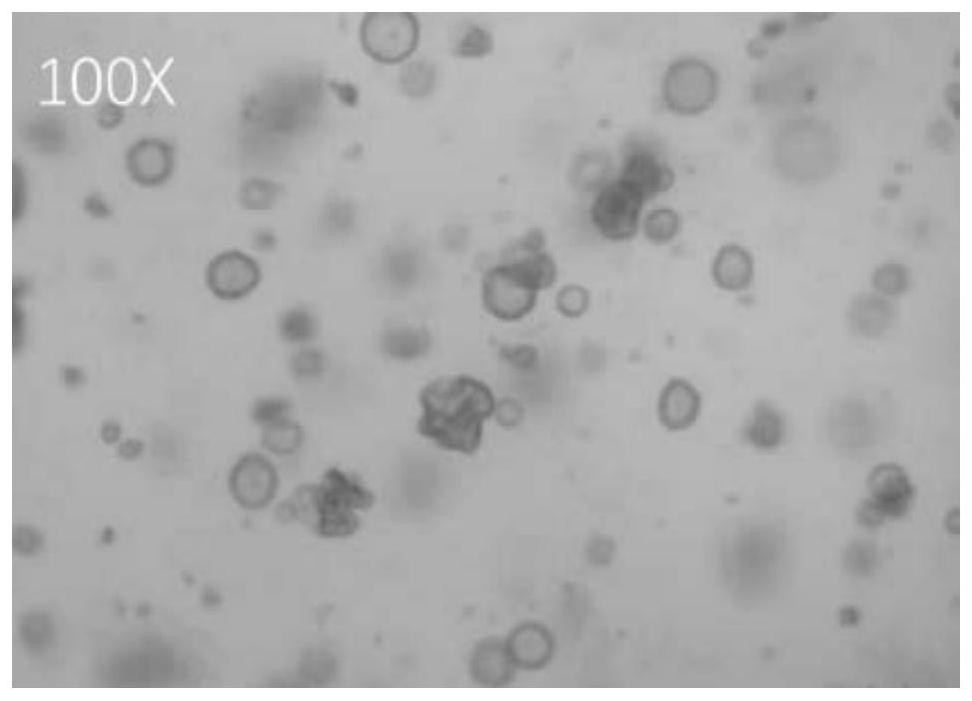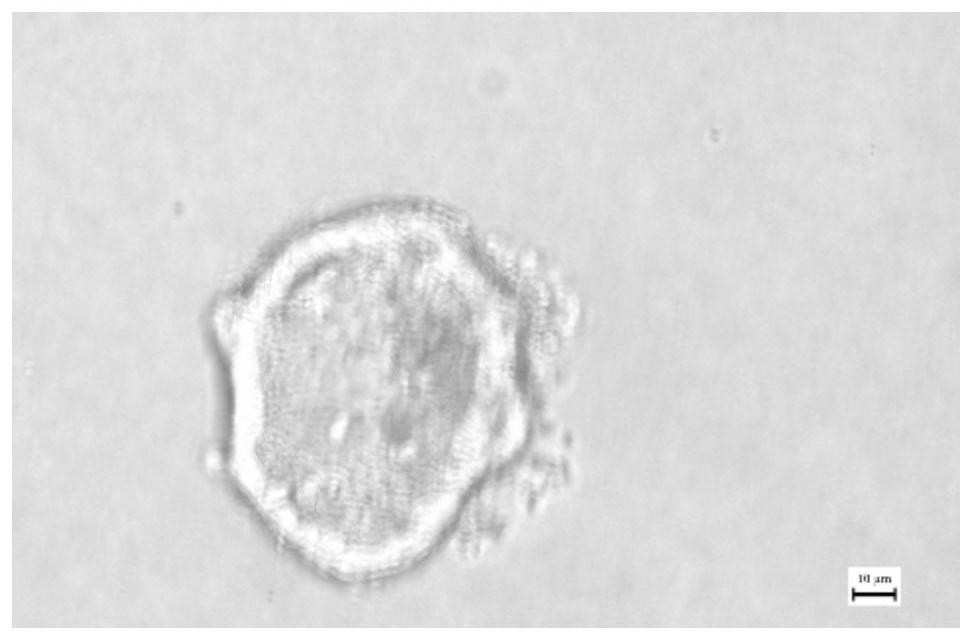Pig liver and spleen duct stem cell separation and three-dimensional organoid culture method
A culture method and organoid technology, which is applied in the field of pig liver and spleen ductal stem cell isolation and three-dimensional organoid culture, can solve the problems of organoid activity and organoid proliferation ability, lack of ductal stem cell isolation, and obvious batch effect, etc. Achieve the effect of high organoid formation rate, high specificity advantage, and good cell activity
- Summary
- Abstract
- Description
- Claims
- Application Information
AI Technical Summary
Problems solved by technology
Method used
Image
Examples
Embodiment 1
[0028] Isolation of pig liver and spleen ductal stem cells and three-dimensional organoid culture method:
[0029] A. Two-step dissociation of porcine liver and spleen tissue to obtain ductal stem cells
[0030] See Table 1 for the components and proportions of the pig liver and spleen tissue dissociation solution:
[0031] Table 1
[0032]
[0033] (1) Preparation before the experiment: a. According to Table 1, prepare 50 mL of tissue dissociation solution, and store it at 4°C for later use. Before use, the dissociation solution should be preheated to room temperature (15-25°C). b. Use 5 mL of anti-adherence rinsing solution (Anti-Adherence Riinsing Solution, STEMCELL) to completely cover and rinse the inside of a 15 mL sterile enzyme-free centrifuge tube (4 in total), and then discard the rinsing solution; use 15 mL of Advanced DMEM / F12 to completely wash Rinse, then discard all the liquid; in the same way, take 20mL of anti-adhesion rinsing solution and 20mL of Advance...
Embodiment 2
[0053] Weaning pig spleen organoid culture method:
[0054] (1) Take a portion of the spleen tissue of fresh 21-day-old weaned piglets in cold (4°C) DPBS, and isolate spleen duct cells based on the two-step method proposed by the present invention;
[0055] (2) Preheat the 24-well cell culture plate in the incubator before the experiment, and pre-cool the 200 μL pipette tip in the refrigerator at 4°C for at least 30 minutes; thaw the Matrigel on ice in advance;
[0056] (3) Use a pre-cooled 200 μL pipette tip to pipette 30 μL of thawed Matrigel to the isolated ductal cells described in Part A, slowly blow up and down to mix 5 to 8 times, and mix well to avoid air bubbles;
[0057] (4) Set the pipette to 50 μL, transfer all the suspension in step (2) to a small well of a 24-well plate and form a dome structure, and slowly drop to the center of the small well to avoid disturbance or formation of air bubbles; repeat step, the remaining ductal cells are processed;
[0058] (5) P...
Embodiment 3
[0062] Culture method of weaned piglet liver organoids:
PUM
 Login to View More
Login to View More Abstract
Description
Claims
Application Information
 Login to View More
Login to View More - R&D
- Intellectual Property
- Life Sciences
- Materials
- Tech Scout
- Unparalleled Data Quality
- Higher Quality Content
- 60% Fewer Hallucinations
Browse by: Latest US Patents, China's latest patents, Technical Efficacy Thesaurus, Application Domain, Technology Topic, Popular Technical Reports.
© 2025 PatSnap. All rights reserved.Legal|Privacy policy|Modern Slavery Act Transparency Statement|Sitemap|About US| Contact US: help@patsnap.com



